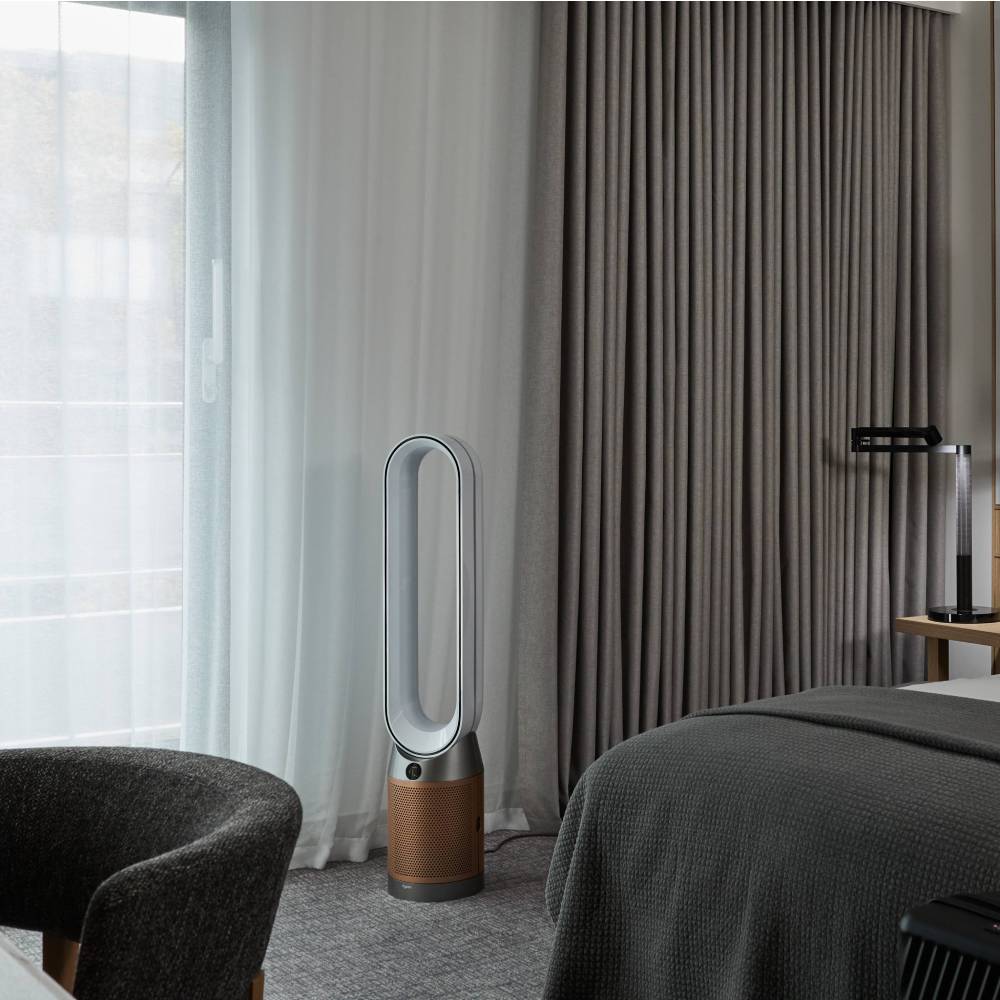Dyson has released its latest generation purifier, designed to tackle indoor pollution and create cleaner spaces within hotels.

Every day, humans breathe up to 9,000 litres of air[1], and as the world edges its way out of lockdowns, adequate ventilation, increased airflow and avoiding touchpoints are top of mind for hotel owners and consumers alike. The industry has a responsibility to ensure the air that is being breathed in these spaces is clean and safe.
Built-in ventilation systems may not have adequate filtration, so airborne pollutants are simply blown around the room. These pollutants can include PM10, PM2.5, VOCs like formaldehyde and NO2. From particulates released by wooden products which use formaldehyde-based resins to formaldehyde off-gassing from furniture, Dyson has engineered its new range with these real-life spaces in mind.
Now available in Australia for commercial spaces and businesses such as hotels, the Dyson HEPA Cool Formaldehyde (AU$799) is designed with intelligent technology at an affordable price-point, ensuring cleaner, purified air for hotel guests and staff.
Formaldehyde is 500 times smaller than 0.1 microns, which makes it particularly difficult to capture but leads to long-term exposure if left undetected due to off-gassing. The new Dyson HEPA Cool Formaldehyde integrates a new solid-state formaldehyde sensor and sealed HEPA 13 standard[1] filtration in a machine that is 20% quieter than the previous model, with a longer cable and a spare remote.
“As we venture back to hotels and other public spaces, we all want reassurance that these spaces are clean and hygienic,” said Dyson’s Vice President of Environmental Care, Alex Knox. “As consumers, we trust that our work and leisure spaces are being properly maintained with technology that genuinely works. Dyson has engineered a machine to respond directly to these concerns – promising cleaner, purified air throughout hotels and workspaces. The Dyson HEPA Cool Formaldehyde does exactly that and more.”
[1] ‘How your lungs get the job done’ American Lung Association, 2017.
[2] Particle challenge by DEHS oil specified in EN1822 within a chamber specified in ASTM F3150. Tested in Max Mode at IBR US, for whole machine efficiency above 99.95%.
In Dyson’s new purifier, it’s not just the filter that meets HEPA H13 standard¹, but the whole machine. It captures 99.95% of particles as small as 0.1 microns[1] such as allergens, bacteria, H1N1 virus[2], pollen and mould spores. High pressure seals at an additional 24 critical points have been added to prevent dirty air from bypassing the filters and carrying pollutants back in the room.

Using Dyson Air Multiplier™ Technology, the machine can project purified air to every corner of the room[3]. Auto mode enables the machine to maintain a preferred room temperature and air quality levels, while the Dyson Link App and voice control activation help avoid touchpoints and possible contamination[4].
For more information, contact AUcommercial@dyson.com or discover more at https://www.dyson.com.au/for-business/air-treatment
[1] Tested for filtration efficiency at 0.1 microns (EN1822, ISO29463).
[2] Whole machine tested by independent third-party laboratory Airmid (Ireland) in 28.5m³ test chamber pre-conditioned to 20±3C and RH 50±5%. Influenza A (H1N1) aerosolised in the test chamber and airborne concentration observed for the duration of 60 minutes under maximum Fan speed. 99% efficacy but real life efficacy may differ depending on actual environment and Fan speed. Tested on Influenza A (H1N1) only.
[3] Tested for air projection (DTM801), purification coverage in a 81m3 room (TM-003711), and heating performance in a 35m3 room (DTM 961).
[4] Requires device to run app, Wi-Fi or mobile data, Bluetooth 4.0 support, and iOS version 10 or Android version 5 (or above). Standard data and messaging rates may apply. Voice control requires compatible device.

